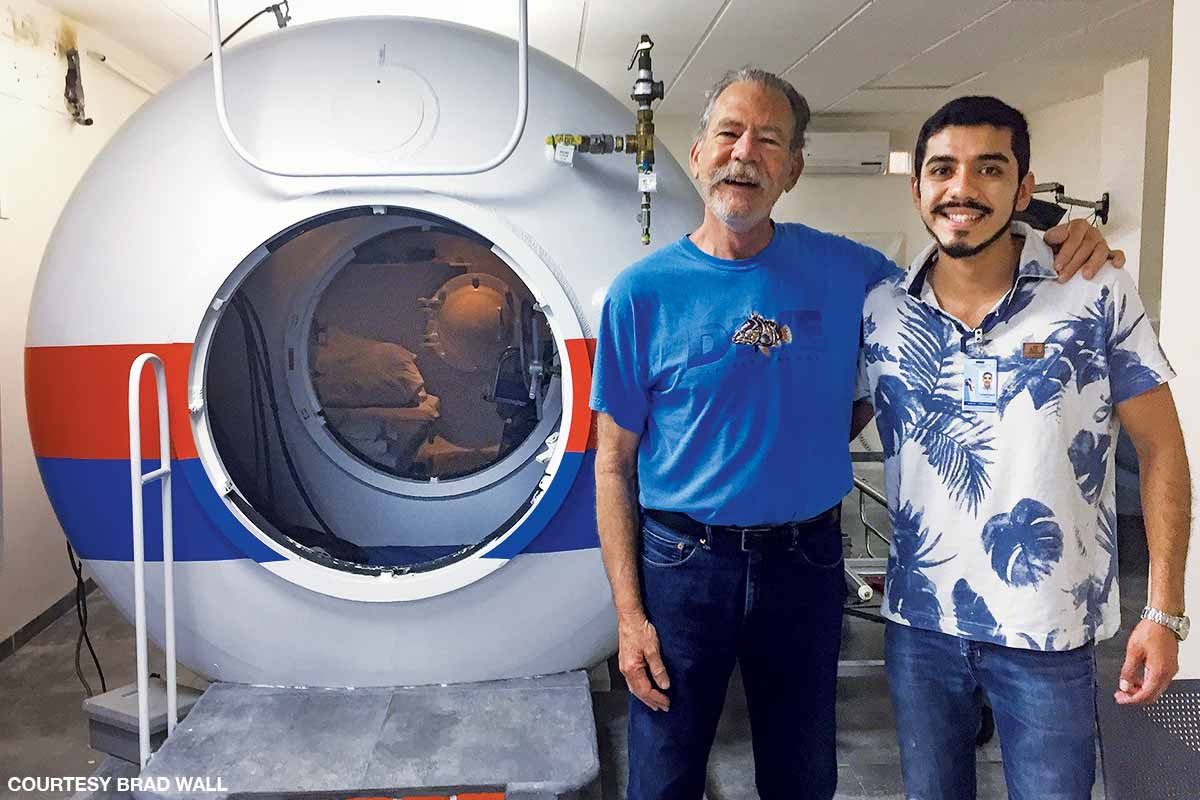My buddy and I ascended to 20 feet for our safety stop. As soon as we surfaced I thought I saw the boat moving away from me but quickly realized I was disoriented. It felt like vertigo, but I managed to get on board the boat. I removed my gear and was talking to my buddy when I started involuntarily leaning forward until I lost my balance and collapsed face-down on the deck. I felt paralyzed and couldn’t get up.
Swimming is a noncontact physical activity that lets you be socially distant while still receiving many health benefits. Exercising in water can increase cardiac function, reduce blood pressure and improve muscle blood flow, respiratory function and brain function. Water reduces joint impact, so you can do high-intensity exercise with little to no discomfort from impact. Swimming targets your entire body and allows a greater range of motion for joints than land-based exercise. Blood flows more freely to your upper body, while the water supports you and lowers gravity’s impact.
If the diver is symptomatic and you are rendering care, then you need to treat the symptoms. Give them the highest concentration of oxygen available, and get them to definitive health care and treatment. Remember that many conditions show symptoms that may mimic DCS. Just because someone was diving does not mean they have a dive-related illness. When creating your emergency action plan, note the location of the nearest emergency room or where and how to access local emergency services.
With adverse events, there is almost always a cascade in four phases: the trigger, the disabling agent, the disabling injury and the cause of death. Individually, each event is avoidable. Recognizing one at the time of occurrence is an opportunity to react and attempt to mitigate the risk before it becomes a problem. In root cause analysis of adverse events, the most significant factors are the lack of recognition and failure to react to the event.
In her work, Rachel Lance, Ph.D., focuses on extreme environments, particularly the effects of explosions. “The human body is fascinating, especially when it fails,” she says. “We are not naturally equipped to survive in a deep underwater environment, so I am fascinated with the idea of finding ways to do so anyway. Perhaps it’s my naturally rebellious side.”
After cylinders first enter service, an annual visual inspection and a five-year hydrostatic test are required. These requirements include cylinders used for diving and other life-support applications and cover breathing air, nitrox, heliox, trimix, oxygen for decompression and argon for drysuit inflation. How are these standards mandated and enforced? What are good and safe practices?
Audible cues and signals can get your buddy’s attention, signal a group of divers or indicate a problem you can help address. Even though we may dive to escape the noise of everyday life, we need to pay attention to the sounds around us. Doing so could make your dive even more special because your buddy got your attention to see something remarkable — or you may even save a life.
The current wrapped the line around my ankle and tighten like a noose. My 30-cubic-foot safety cylinder should have provided plenty of oxygen to complete my decompression stops, but I hadn’t closed the valve after charging it, so the current rushing past the mouthpiece purged the tank. I was now trapped 20 feet beneath the surface with nothing to breathe and no one aware of my peril, hoping that my mistakes with the line and my breathing gas wouldn’t be my last.
Underwater photographers sometimes refer to the narrow water zone where a subject splits the surface as the Plimsoll interface. Opportunities abound here for dynamic shots achieved by angling the camera above or below the waterline. The dedicated and creative underwater photographer can capture traditional over-under split shots with a standard straight meniscus and dramatic reflections from below of the subject, the sunlight or both as part of a modified split shot or a fully underwater picture.
In Wild Seas, his new book published by National Geographic, Thomas Peschak ponders his career path: “My life as a National Geographic photographer has been socially isolating, emotionally exhausting and physically demanding — but it is the most rewarding pursuit I can imagine. I have cried from loneliness, felt nauseous with fear and cursed in frustration. But every time I thought I was at my limit, I discovered untapped reservoirs of strength, creativity and passion. This is not a job; it’s a calling.”



